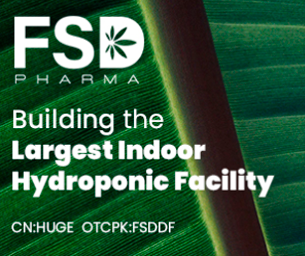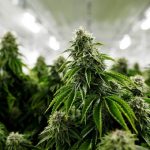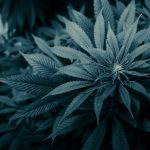U.S, June 09, 2020 (ANALYTICALCANNABIS) Cannabis is big business. More and more states are passing medical use laws and the recreation-al cannabis market is not far behind. Medical use is mainly focused on cannabidiol (CBD) extracts while extracts of tetrahydrocannabinol (THC) have led the recreational market’s development of everything from oils for vaping to edible candy. Cannabis-extraction-essentials
The key to all products, however, is the extraction stage. Use of advanced chemical techniques and high-tech industrial machinery has allowed cannabis producers to experiment with new approaches. These state-of-the-art methods have led to new forms of cannabis extracts such as vape oils, oral tinctures, crumbles, and wax concentrates.
Primary extraction techniques
The three most used extraction techniques by the cannabis industry are alcohol extraction, hydrocarbon extraction, and supercritical carbon dioxide (CO2) extraction. As with most things in life, there are pros and cons for each of these methods.
Alcohol extraction uses ethanol and can be performed cold, hot, or at room temperature. It remains one of the most efficient extraction methods. However, the hot ethanol often extracts unwanted chlorophyll and plant waxes and requires clarification or correction steps. The cold process reduces these contaminants at the price of longer extraction times. Room temperature ethanol extraction splits these differences.
Hydrocarbon extraction uses butane or propane, solvents with much lower boiling points than ethanol. These solvents extract more of the plant terpenes, which provide more flavor and aroma and are therefore better for vape oils or oral tinctures. However, like the alcohol method, scaling up to large batches is difficult and presents significant safety hazards.
CO2extraction necessitates expensive, high tech specialized pressure and temperature control equipment to handle turning gaseous CO2 into a supercritical fluid or cryogen. The liquid CO2, with careful control, easily extracts oils and waxes and in some uses requires little to no post-processing. The CO2 extraction process is highly tunable, allowing different pressures and temperatures to extract unique botanical compounds.
Safety considerations
Following the discussion above, it is obvious that two of the three main extraction methods involve use of extremely flammable solvents. The third involves the use of a cryogen with its own specific safety concerns. Therefore, cannabis extraction, particularly at production scale, entails some significant safety issues.
How can you properly deal with hazards in the lab or production facility? Start with a comprehensive hazard communication program (HCP). OSHA’s standard for this is 29CFR1910.1200.1The purpose of the standard (and your required written program) is to ensure that the hazards of all chemicals used, stored, and handled are properly classified and that the information is conveyed to employees.
First, identify all hazards. This begins by building a chemical inventory or list of chemicals with associated important information such as material owner, date acquired, amount on hand, storage location, and accompanying safety data sheet (SDS).
SDSs are the second critical component and contain 16 specific sections detailing information on the chemical’s constituents, physical properties, health hazards, first aid measures, personal protective equipment, and special handling and disposal requirements.2The SDS contains all the information needed to develop your HCP and is critical if an exposure or incident occurs. Ensure access to the SDS is available within a few minutes at all times (e.g. 24/7).
Train employees
After identifying hazards and building inventory of hazardous chemicals, conduct the communication part of the program. This means getting the critical information to employees (e.g. training our workers on the hazards of each chemical).
In addition to the hazards, employees should receive training on the potential exposure routes, signs, and symptoms of exposure and chemical warning properties (or lack thereof). Training should also include any personal protective equipment necessary for using the chemical as well as incident response, mitigation steps, and first aid measures.
Preventive and proactive health and safety is crucial—this means the timing of training matters. All employees should receive training prior to beginning any work with hazardous chemicals. Annual refresher training is highly recommended. Conduct a thorough review and re-training after any close-call or incident.
Evaluate exposures
Industrial hygienists are trained to anticipate, recognize, evaluate, and control all potential health and safety hazards in the workplace. Knowing that many chemical solvents pose significant risk for exposure and health consequences, we must admit that exposure assessments are necessary.
The most common cannabis extraction solvents have low permissible exposure limits (PEL). These are regulatory limits set by OSHA standards that indicate how much chemical a worker could be exposed to over an eight-hour day, 40-hour work week, and normal lifetime without adverse effects. Ethanol’s PEL is 1000 ppm, butane is 800 ppm, and propane is 1000 ppm.
Conduct exposure assessments and ensure workers handling the materials, as well as those in close proximity, are included in the assessment.
Flammable material safety
Prudent Practices states the most common fire hazard in the lab is a flammable liquid or the vapor produced by one.3 And flammable liquids are the most commonly stored material and make up the largest volume of hazardous material.
The National Fire Protection Association’s (NFPA) Code for Flammable and Combustible Liquids, NFPA 30, is an excellent resource and introduction to the hazards of these materials.4 NFPA 30 rates the fire hazard of flammable and combustible materials on a scale of 0 to 4 based on flash point. This rating helps you to quickly assess the potential danger of a substance. Zero is the least hazardous and indicates the material will not burn. A rating of 1 is given to materials with flash points above 200°F and indicates the material needs to be preheated to burn. A 2 rating is for materials with flash points between 100°F and 200°F and these materials will ignite with moderate heat. Materials with flash points below 100°F and above 73°F are rated a 3 and will burn at normal temperatures. Flammables with flash points below 73°F are rated a 4 and are extremely flammable and the most dangerous. The fire hazard rating and flash point data are readily available on the container label and SDS.
NFPA 45, Fire Protection for Laboratories Using Chemicals, is the first reference to turn to as it provides universal guidelines for safe storage.5 The maximum quantity of flammable and combustible materials that can be stored in the lab is set in NFPA 45. And, this standard determines the hazard classification of the laboratory or production facility based on these quantities.5
Chapter 4 of NFPA 45 classifies laboratories into four fire hazard categories based on the amount of flammable and combustible material in the lab. These are Class A (high fire hazard), Class B (moderate), Class C (low), and Class D (minimal). Chapter 10, specifically table 10.1.1, provides the maximum quantities of flammable and combustible liquids that can be stored in laboratories. In terms of a total amounts, Class A is allowed up to 10 gallons (38L) of Class I flammable liquid per 100 square feet or 20 gallons (76L) of Class I, II, and III flammable and combustible liquid combined. These quantities can be doubled to 20 gallons of class I liquid and 40 gallons (150L) of class I, II, and III liquids combined with the use of safety cans or fire-rated storage cabinets.
Maximum capacities also are based on container types. For example, for Class IA flammable liquids, the largest allowed container is one pint (500ml) for glass, one gallon (4L) for metal and approved plastic or polyethylene, and 2.6 gallons (10L) for safety cans. These maximum capacities are listed for each class of flammable (IA, IB, IC) and combustible (class II and III) liquid. So, it is important to maintain awareness of both total quantities and your largest size containers.
Safely storing flammable and combustible liquids in laboratories or stockrooms is paramount. By paying attention to the hazard class of the material, the largest container size, and the total quantities, we can minimize risk. In addition, here are some general guidelines for safe flammable and combustible storage:
- Do not store large, heavy containers of liquids on high shelves or in high cabinets. A good rule is to store them at shoulder level or below.
- Do not store bottles on the floor unless they are in some type of secondary containment.
- Do not store flammable or combustible solvents near heat sources or in direct sunlight.
- Do substitute non-flammable materials whenever possible.
- Do post the work area with appropriate signs, (e.g. “No Smoking” and “No Open Flames”).
- Do store flammable liquids in approved storage cabinets, explosion-proof refrigerators, and safety cans.
- Do clear the area of all ignition sources.
- Do transfer flammable liquids with extreme caution.







